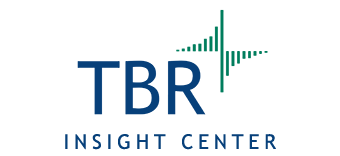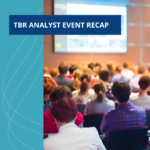Salesforce Fills Its Data Governance Gap, Assembling an End-to-end Platform to Power Agentic Workflows
Informatica acquisition is big step in already robust platform strategy
As agentic AI begins to blur the lines between applications and platforms, Salesforce continues to demonstrate its intent to lead in embracing change. Ever since the company’s 2018 acquisition of MuleSoft, purchasing platform vendors has, on average, been an every-other-year occurrence — and Salesforce continued this pattern in May when it finally entered into a definitive agreement to acquire Informatica. This marked the culmination of a yearlong pursuit, as the two companies were unable to reach an agreement at a rumored $11 billion price point in April 2024.
Waiting paid off for Salesforce, which is now expected to close at a price point of $8 billion — $3 billion less than the previously rumored figure. While the acquisition cost decreased due to a decline in Informatica’s publicly traded stock price, the company’s IP only became more relevant to Salesforce’s data and AI strategy over the year. As Salesforce CEO Marc Benioff put it, the merger will result in “the most complete agent-ready data platform in the industry.” It is a bold statement, but there is merit to the claim — Salesforce’s cohesive platform portfolio aligns well with the company’s Agentforce ambitions.
Informatica is an important addition to this cohesive portfolio. Data governance and management was a lingering capability gap — one of growing importance due to the lack of standardized data formats across acquired IP and the third-party applications offered via AppExchange.
Connecting customers’ entire front-office estate to Agentforce will require these data formats to be standardized across these systems, compelling Salesforce to offer these capabilities natively. This will bring Salesforce a big step closer to delivering on its promise to offer customers a unified, end-to-end portfolio capable of supporting agentic workflows. Selling the story and delivering on customers’ ROI expectations will be the next step, requiring Salesforce to be an innovator in contextualized model development as the company looks to unlock new use cases.
Informatica and its place within Data Cloud
With Informatica, Salesforce will gain a data management and governance leader. TBR covers Informatica’s product development strategy in greater depth in the recent special report Data Quality & Governance Pillars, and Ecosystem-led Approach Mark Informatica’s Entry Into Agentic AI. To quickly reiterate some of the big takeaways:
- Informatica has become more ambitious over the past year in its agentic AI pursuits. The company argues that agents that can reason and act across workflows require far more than large language models. They need clean data, reliable orchestration and deep context. Informatica views its metadata-rich foundation — anchored in CLAIRE (Cloud-scale AI-powered Real-time Intelligence Engine) — as a critical advantage in this emerging stack. With this foundation, the company will target the AI opportunity from two angles. As TBR describes in the special report linked above, the two approaches include “Informatica for GenAI, in which customers use IDMC’s [Intelligent Data Management Cloud] data management capabilities to enable enterprises’ GenAI use cases; and GenAI from Informatica, where customers leverage Informatica’s GenAI offerings.” CLAIRE Copilot entered general availability at the event, while CLAIRE GPT, which is already used by over 550 customers, continues to automate cataloging, data access and metadata queries. In addition, Informatica made its formal entry into the agentic AI space. Eight new CLAIRE Agents were announced — focused on core data management tasks like quality, ingestion, lineage and modernization — and are scheduled to enter preview in the second half of 2025.
- Ecosystem development is a major priority for Informatica as well. The firm highlighted its expanding relationship with both Microsoft and Salesforce. Microsoft and Informatica continue to deepen their ties, most notably with the integration of Informatica Data Quality as a native application within Microsoft Fabric, while CLAIRE Copilot, built using Azure OpenAI, reinforces the alignment. Still, this development is occurring outside the Salesforce umbrella. Under Salesforce ownership, integrations between Informatica and Microsoft will likely be deprioritized. However, the impact of the acquisition on Informatica’s broader relationships with third-party SaaS vendors will depend on Salesforce’s commitment to maintaining its open ecosystem approach.
Meanwhile, the company’s standard platform assets are likely of greater relevance to Salesforce. Informatica’s IDMC will bring ingestion pipelines and ETL (Extract, Transform, Load) tooling purpose-built for hybrid environments — something Salesforce would otherwise need to build or buy elsewhere. And with Informatica’s governance and metadata engine (CLAIRE), Salesforce will gain explainability and policy controls that are critical for deploying AI in regulated environments.
In short, Informatica will equip Salesforce with the ingestion and governance layers Data Cloud is missing — layers that are now prerequisites for scaling AI credibly in the enterprise. Crucially, Informatica’s prebuilt integrations and policy automation tools lower the barriers to entry for enterprise teams experimenting with agents, accelerating time to value for Agentforce deployments.
Salesforce is looking for a way to accelerate top-line performance with an end-to-end portfolio capable of powering automated workflows
Informatica joins MuleSoft, Slack, Own and Tableau in the ranks of large IP purchases Salesforce has made in pursuit of its platform-meets-application layer vision. While AI is still a relatively new part of this conversation, building a platform backbone and centralizing workflow management around Slack is a concept that has been around since the business messaging application was acquired in 2020.
The emergence of agentic AI brings a powerful new technology to drive deeper automation, which aligns perfectly with this existing goal but also elevates the need for a robust, well-rounded data layer. Agentic outcomes are contingent upon access to quality, standardized data and metadata, and the ability to natively offer modern governance capabilities via Data Cloud will help Salesforce deliver the positive ROI it is chasing with Agentforce.
This moves Salesforce closer to realizing the CRM-plus-data-plus-AI vision that the company’s leadership has been championing. That said, execution remains to be seen. MuleSoft and Tableau are healthy growth drivers for Salesforce, but Data & AI makes up just $1 billion of the company’s $37.2 billion in annual recurring revenue (ARR) as of CY1Q25. Agentforce contributes only $100 million in ARR.
Despite Agentforce’s triple-digit year-to-year growth, this scale means the contribution is not enough to move the needle in terms of total top-line performance. TBR continues to believe this will come with time as the still-nascent platforms mature in the market, though this will require the company to sustain the platform’s triple-digit growth in the short term, followed by high-double-digit growth in the medium term.
Internally, Salesforce is hiring into its sales teams and setting a goal for each of its account executives to land an Agentforce deal within the year. Ecosystem development will complement this strategy as Salesforce works with IT services partners to sell Agentforce and accelerate time to value for early adopters. TBR’s conversations with ecosystem channel partners have led us to suspect that the platform’s growth will accelerate in the future, but Salesforce will need to execute in the days and months ahead.
Informatica purchase will be margin accretive in CY2026
To briefly touch on the economics of the transaction, Salesforce anticipates the acquisition will be accretive to operating margins and cash flows by the end of the second year post-integration, so TBR does not expect it to derail the progress the company has made in establishing a new margin floor.
Near-term impacts are expected but should roll off quickly, allowing Salesforce to continue enjoying the ample free cash flow it has earned through its disciplined approach to cost-cutting. This will provide the company with meaningful liquidity, positioning it to remain a strategic acquirer long-term, as evidenced by the less splashy Convergence acquisition, which was announced in May.
Long-term acquisition strategy
TBR expects Salesforce to focus on integrating Informatica before committing to other large purchases. That said, smaller IP- and talent-driven acquisitions in the AI space will likely ramp up, similar to the recently announced acquisition of Convergence, an AI startup focused on agentic AI research. These smaller acquisitions will play a role in Salesforce’s portfolio development strategy.
Moreover, the company’s operating efficiency plan more than doubled free cash flow between 2023 and 2025, providing Salesforce with the capital to fund an accelerated acquisition strategy. AI will be a primary target of these acquisitions, though vertical-specific front-office solutions could also be major considerations as the company broadens its portfolio to create new native applications to connect to Agentforce.
Salesforce’s acquisition of Informatica is not only additive but also connective
By bringing governance, metadata and ingestion capabilities in-house, Salesforce will fill critical platform gaps that limit the company’s ability to scale Agentforce and deliver on its broader AI vision. The pieces now fit: a unified stack spanning CRM, data and AI. Execution, of course, is the next hurdle.
Agentforce is still in the early days of development, and the company’s ability to drive meaningful ARR from the platform will depend on sustained growth, smart ecosystem plays and clear ROI for customers. But once Informatica is in place, Salesforce will be better equipped to turn its AI ambitions into enterprise outcomes — and to do so in a unified way.


 Technology Business Research, Inc.
Technology Business Research, Inc. Canva Pro
Canva Pro